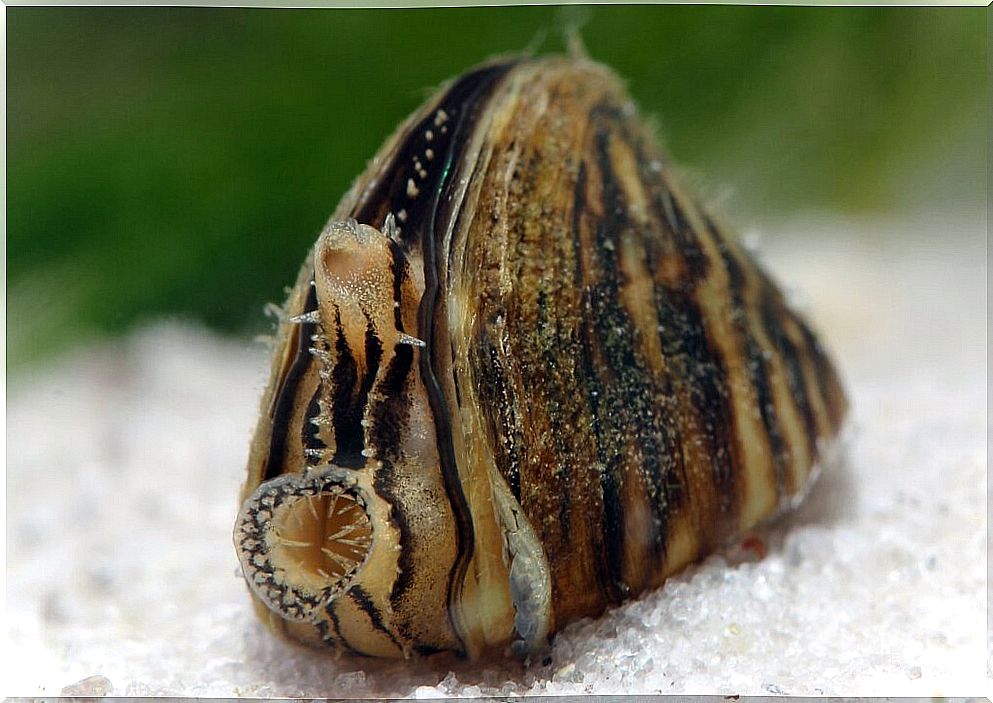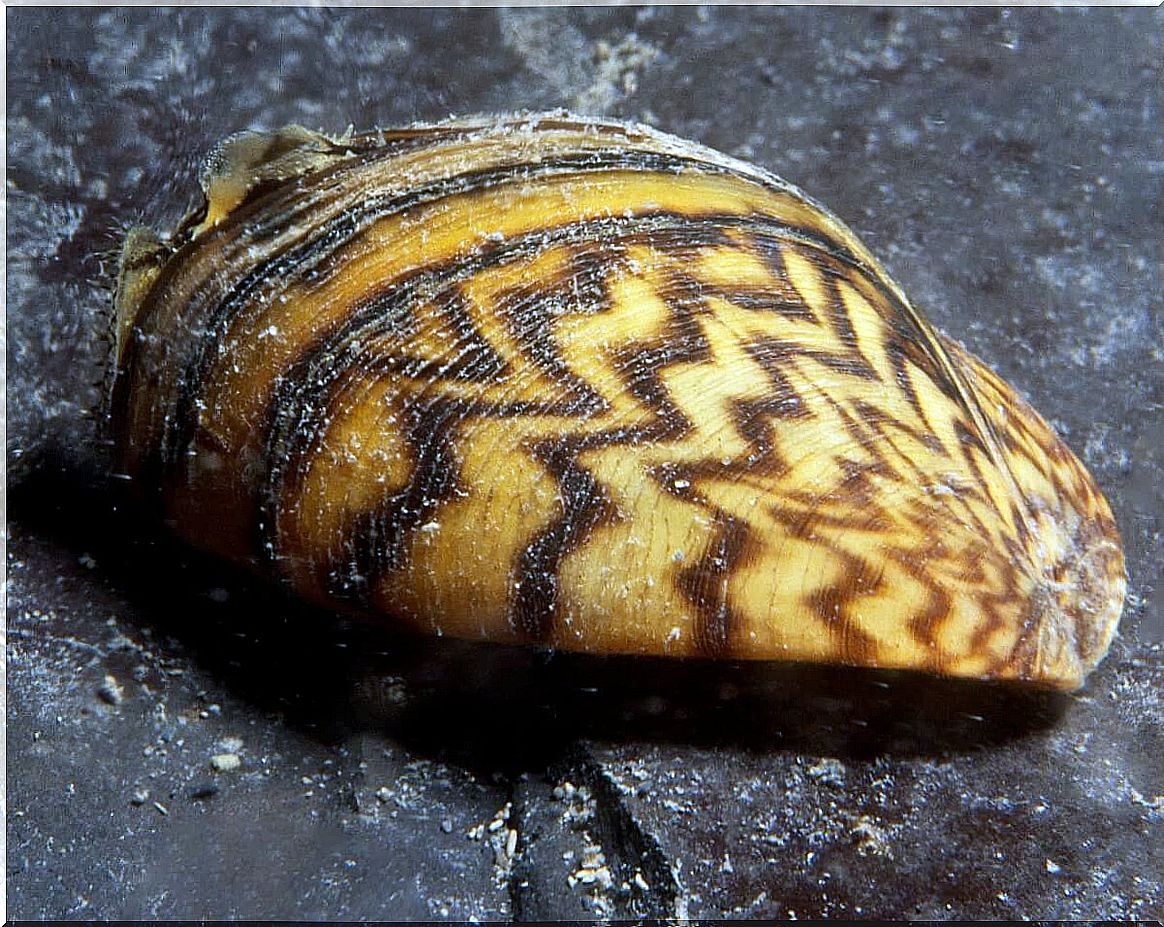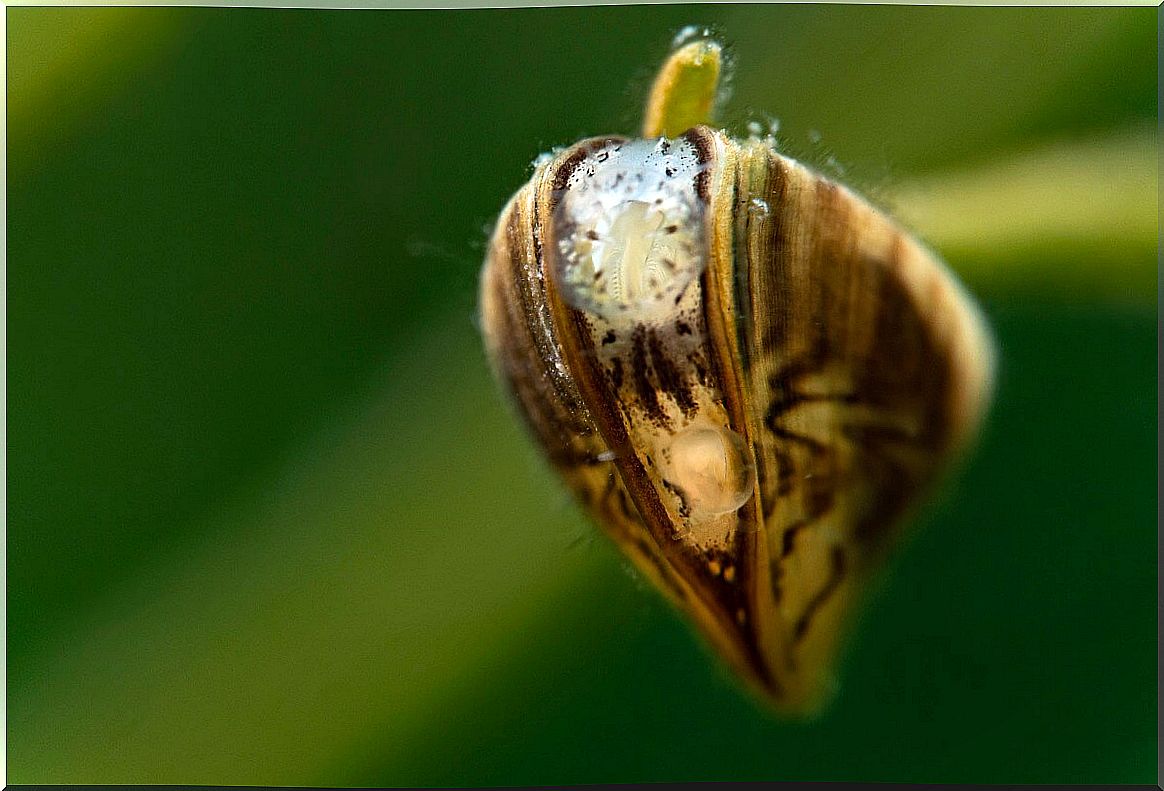Zebra Mussel: Characteristics Of An Invasive Species

When one thinks of an invasive species, very striking examples come to mind: the famous Argentine parrots, the American tortoises that infest Spanish rivers, or the domestic cats, which are devastating to wildlife. However, one of the most harmful invasive species looks much less conspicuous: we are talking about the zebra mussel.
Like a normal mussel, this invertebrate does not move or hunt. Your only defense is your shell. Despite this, these animals are dangerous. They have an incredible ability to colonize ecosystems to which they do not belong, once introduced by man.
The consequences of the zebra mussel invasion are disastrous, both for the native nature and for the human being, causing enormous economic losses.
How is the zebra mussel?
The zebra mussel ( Dreissena polymorpha ) is a very small bivalve mollusk. It reaches a maximum of 3 centimeters in length, although it is usually smaller. Its colors and shell are mottled and variable, hence its scientific name.
The pattern on the shell is usually made up of light and dark irregular bands that are often zigzag , but can be smooth. Dark ones are usually brown or black, light ones are cream or pale yellow.
The shell, on the other hand, is more or less triangular, with 2 straight sides and one rounded. The umbo – the vertex that joins the 2 straight sides – is quite sharp. The other 2 vertices are very smooth.
Also, one of the straight sides is longer than the other. This side is thickened and flat, allowing the mussel to stand upright when placed on this side on a flat surface. This makes it possible to distinguish Dreissena polymorpha from other mussels.

Where does it come from?
This mollusk lives in fresh and brackish waters. Its natural distribution is limited to the Black Sea and Caspian Sea basins, which are found in Eastern Europe and bordering Asia.
However, its current distribution covers a large part of the globe and is constantly expanding. Today, the zebra mussel appears as an invasive species in Spain, Switzerland, Greece, France, Sweden or Belgium are just a few examples. The same is true in the United States, where it has colonized most states, and in some areas of Canada.
As is characteristic of invasive species, the zebra mussel has spread throughout the world due to man. In this case, the most likely culprit is browsing.
The mussel was transported away from its natural areas in the ballast water of ships or fixed on some surface. Water transfers between river basins and the transport of exotic fish also contributed to the problem. Another vector to consider is contaminated equipment.
These mussels have a huge tolerance to salinity, temperature and drought levels. In addition, they are very resistant to chlorine. Therefore, they are extraordinary colonizers.
As long as they have a hard surface to attach themselves to and the availability of oxygen is adequate, mussels can reproduce and colonize wherever humans carry them. Undoubtedly, the resistance of this invertebrate is a danger to the ecosystem outside its natural range.
Damage caused by the zebra mussel
Invasive species severely damage the ecosystems they colonize, but this damage is not limited to just wildlife. Human beings are also strongly influenced by its presence.
Human victims
D. polymorpha attaches itself en masse to infrastructure and machinery of all kinds. Therefore, it clogs pipes, filters, motors, and tanks, among others. This damages the energy, agricultural and tourism industries, as well as making water supply to urban centers much more difficult. All this causes significant economic losses.
These invertebrates are also found in recreational areas. Their shells are sharp and can cut, putting public health at risk.
Environmental losses
These bivalves feed on plankton, the basis of aquatic ecosystems. When they invade a new one, they greatly transform its characteristics.
Mussels increase the clarity of water, modify phosphorus cycles, increase the deposition of organic matter and the proliferation of harmful bacteria and algae. They also reduce the availability of oxygen in aquatic ecosystems. All these alterations make the invaded environments less suitable for local life.
On the other hand, this bivalve mollusk threatens native mussels through direct competition. Species such as Margaritifera auricularia , Anodonta cygnea and Unio elongatulus are seriously threatened by the zebra mussel.
Furthermore, it also favors the transmission of pathogens to the local fauna. Many birds have died of botulism – caused by a toxic bacterium – that comes from these mussels.

As has been shown, the zebra mussel is a very dangerous species. Keeping it under control is very important, but also very complicated. Therefore, as is always the case in these cases, the best strategy to avoid damage is to prevent the introduction of potential invasive species in the first place.








